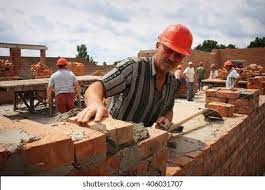Masonry, an ancient building technique www.bristonehg.com/stone-installation-toronto dating back thousands of years, continues to shape our architectural landscape with its enduring strength and aesthetic appeal. From the grandeur of historic monuments to the sleek lines of contemporary structures, masonry remains a cornerstone of construction worldwide.
Origins and Techniques
The origins of masonry can be traced to early civilizations such as the Egyptians, who used sun-baked bricks and stone blocks to construct the iconic pyramids. Over time, civilizations across the globe refined masonry techniques, incorporating locally sourced materials and innovative bonding agents.
Today, masonry encompasses a variety of materials and methods:
- Brick Masonry: Utilizing fired clay bricks, this method offers durability and versatility, seen in everything from humble cottages to elaborate facades of urban skyscrapers.
- Stone Masonry: Quarried stone, whether rough-cut or polished, brings a timeless elegance to buildings, emphasizing craftsmanship and natural beauty.
- Concrete Masonry: Concrete blocks or poured concrete walls provide strength and stability, essential for modern high-rise construction and infrastructure.
Advantages of Masonry
The enduring popularity of masonry is due to several key advantages:
- Durability: Masonry structures are renowned for their longevity, standing the test of time and weathering environmental elements admirably.
- Fire Resistance: Brick and stone inherently resist fire, making masonry buildings safer and more resilient in emergencies.
- Insulation and Energy Efficiency: With proper design, masonry provides excellent thermal mass, regulating indoor temperatures and reducing energy consumption.
Architectural Diversity
Masonry’s versatility allows architects and builders to create a wide array of architectural styles:
- Traditional Styles: Colonial, Victorian, and Tudor homes often feature intricate brickwork or stone facades, reflecting historical charm.
- Modern Interpretations: Contemporary architects use masonry creatively, blending materials and textures to achieve sleek, minimalist designs or bold geometric forms.
Sustainability and Maintenance
In an era increasingly focused on sustainability, masonry stands out for its eco-friendly qualities:
- Local Sourcing: Locally sourced materials reduce transportation emissions and support regional economies.
- Low Maintenance: Properly constructed masonry requires minimal upkeep, contributing to reduced lifecycle costs and environmental impact.
Challenges and Innovations
Despite its strengths, masonry construction faces challenges such as seismic considerations and the need for skilled labor. Innovations in bonding agents, prefabrication techniques, and seismic retrofitting enhance masonry’s adaptability and safety in diverse conditions.
Conclusion
Masonry building remains an integral part of global architecture, blending craftsmanship with contemporary technology to create enduring structures that define our urban and rural landscapes. Whether preserving historical landmarks or shaping the skylines of tomorrow, masonry’s timeless appeal continues to inspire awe and admiration, making it a cornerstone of sustainable, resilient construction practices worldwide.

